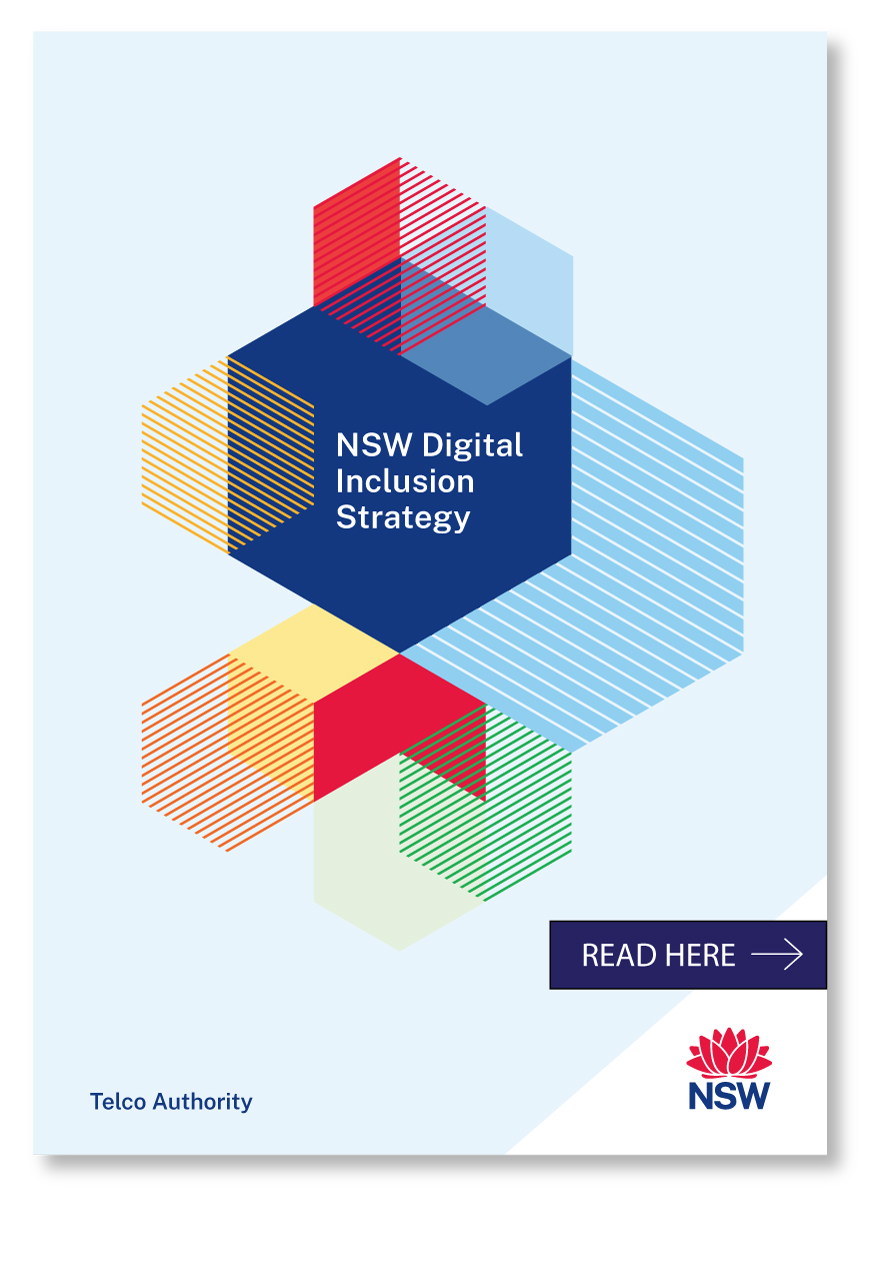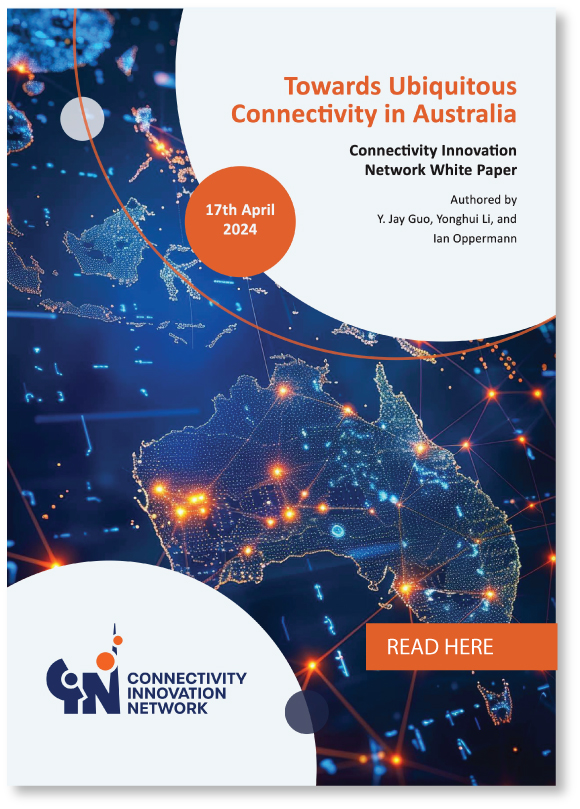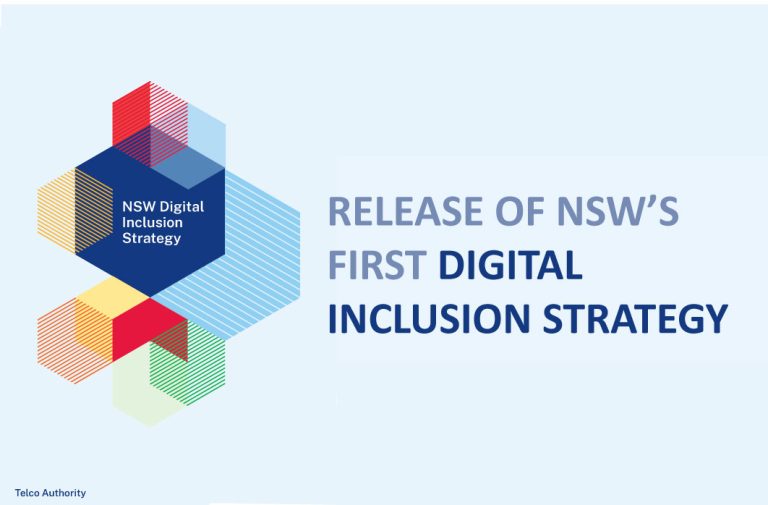
Jennifer Medway on Digital Inclusion: Realities from Regional NSW
The Connectivity Innovation Network welcomes the release of NSW’s first Digital Inclusion Strategy, published today. Ensuring that everyone can access, use and benefit from digital connectivity is vital — a principle central to our connectivity white paper: Towards Ubiquitous Connectivity in Australia.
We’re pleased to see this important step forward from government and look forward to continuing our work in support of inclusive, resilient and future-focused connectivity across New South Wales.
To explore what digital inclusion really means on the ground, CIN spoke with Jennifer Medway — General Manager of the Regional Tech Hub and a 5th generation farmer — about the everyday realities of exclusion in rural communities and the importance of locally driven solutions. We had the privilege of hosting Jennifer at our second Regional Connectivity Symposium in Wagga Wagga in 2024, where she shared valuable insights into the lived realities of digital exclusion and the importance of community-led solutions.
To explore what digital inclusion really means on the ground, CIN spoke with Jennifer Medway — General Manager of the Regional Tech Hub and a 5th generation farmer — about the everyday realities of exclusion in rural communities and the importance of locally driven solutions. We had the privilege of hosting Jennifer at our second Regional Connectivity Symposium in Wagga Wagga in 2024, where she shared valuable insights into the lived realities of digital exclusion and the importance of community-led solutions.
Jennifer Medway is a fifth-generation farmer and the General Manager of the Regional Tech Hub. She spoke with the Connectivity Innovation Network to mark the release of the NSW Government’s first Digital Inclusion Strategy on 7 May 2025.

NSW’s Digital Inclusion Strategy is structured around five pillars: Connectivity, Affordability, Digital Ability, Accessibility, and Digital Trust and Safety and includes plans to establish a Digital Inclusion Mentorship Network to support community-led solutions. For many people across the regions, these aren’t abstract policy categories, but they are day-to-day challenges. And while Jennifer sees growing digital ability as the most urgent gap, she also underscores a deeper truth: connectivity remains a foundational enabler.
That’s where programmes like the Connectivity Innovation Network come in — not only exploring practical solutions to connectivity gaps, but also supporting the local champions who are essential to turning inclusion policy into reality.
CIN: As a farmer who’s also worked closely with regional and remote communities for years — in your experience, how does digital exclusion show up in everyday life?
JM: It’s not a nice-to-have anymore — everything’s online now. Whether it’s paying bills, managing livestock records, or booking a health appointment, it all assumes a level of connectivity and digital literacy that many people simply don’t have.
Take two-factor authentication. It sounds simple, but for people with unreliable service, it’s often impossible. If your phone’s your only device and your internet goes down — you’re locked out. That’s a real barrier.
Even in agriculture — which people assume is low-tech — everything is shifting online. We’re dealing with national vendor declarations for livestock and farm management systems that rely on digital access. When connectivity is poor or literacy is low, people just fall further behind.
CIN: Are there noticeable differences in how digital exclusion affects different age groups or communities?
JM: Yes — and it’s not just older people. There’s an assumption that young people can do everything on their phones, and to an extent they can. But when you go beyond social media — into troubleshooting connectivity or managing devices across a household — they often don’t have the knowledge either.
On the flip side, we meet older Australians who just want to call their neighbour or use their phone safely without scams. So it’s a different kind of exclusion. One that’s just as real.
CIN: What impact does this have on access to essential services like healthcare or education in the regions?
JM: There’s been a shift. In the past, there was concern that regional people couldn’t access telehealth because their internet wasn’t good enough. That’s changed. The infrastructure has improved — but literacy hasn’t kept pace.
People might rely entirely on mobile broadband, which is unstable. We see kids trying to do schoolwork while parents stream TV — on the same mobile plan — and everything crashes. Programmes like the School Student Broadband Initiative are a game-changer, offering free internet to families that need it. But gaps remain.
CIN: Which of the strategy’s five pillars do you find need the most attention in rural areas?
JM: Digital Ability. We’ve got more connectivity options than ever — but most people don’t know what they have, what they need, or how to optimise it. We often talk about three things: Get connected. Stay connected. Improve connection. People need support at all three stages.

The town centre of Gundagai — a region that scores just 32 for stationary connectivity on the NSW Digital Connectivity Index, highlighting challenges for residents in accessing services like remote work, video calls and telehealth.
Trust is also huge. Sophisticated scams are hitting communities hard, especially older people. It’s not just the money — it’s the loss of confidence. That’s enough to stop someone from ever going online again.
CIN: The strategy places a strong emphasis on local mentorship and community-driven solutions. Why are these so important?
JM: Because nothing beats someone you trust showing you how to do it. We’ve learned that when we’re face-to-face — say at a community event — and we literally ask people to take out their phones and check their service, they do it. But they wouldn’t if we just sent a flyer.
That’s why place-based work is so powerful. It’s not easy. It’s expensive and complex. But it works. Every community has its go-to people — the librarian, the post office, the IT person. We need to reach them, support them, and build around them.
CIN: The Connectivity Innovation Network is tackling connectivity gaps through practical innovation — from large-area Wi-Fi to AI-driven power resilience. In your view, why is it so important to keep supporting initiatives like these that address critical needs and have the potential to save lives?
JM: Critical. Connectivity is a puzzle. It won’t ever be solved by one solution — not Starlink, not fibre, not direct-to-handset — but we need all of them. What CIN’s doing is filling the gaps where the commercial sector won’t go. That’s essential.
Plus, these trials help us test what’s replicable. Even if it’s place-based, if it works, others can pick it up. That creates real options for councils, communities, and emergency services.
It’s not just about getting people online — it’s about ensuring they’re supported to thrive once they are.
CIN: Finally, if you could share one message with the leaders responsible for implementing this Strategy, what would it be?
JM: Don’t forget the people who aren’t online. If we only invest in what’s next — the latest tech — we’ll just widen the gap.
We need to redesign the system so it works more like electricity: you flick a switch and it just works. Right now, that’s not reality. People face 100+ decision points when choosing a service — and most just pick whatever the last tenant had. Others are still on ADSL.
We’re not short on options. We’re short on clarity, trust, and confidence. That’s where the real work lies.
About the Regional Tech Hub
The Regional Tech Hub is an independent service that helps people in regional, rural and remote Australia connect to and make the most of digital technology. Delivered by the National Farmers’ Federation, the Hub is funded through the Australian Government’s Stronger Regional Digital Connectivity Package.
Its team of experts offers free, practical support via its website, callback service, online chat and social media — providing independent advice on broadband technologies and troubleshooting common connectivity issues.
Learn more:
More on CIN’s Innovation Focus
The Connectivity Innovation Network, funded by the NSW Telco Authority, supports technology initiatives that address some of the most pressing gaps in Australia’s connectivity and emergency response landscape. Each project tackles a critical societal challenge by innovating in areas that have yet to be adequately addressed:
- Rapidly Deployable Large Area Wi-Fi System (project completed): delivers fast, stable wireless coverage over large geographic areas with minimal infrastructure — a vital tool for emergency response, field operations and remote deployment.
- Power Resilience Project (in progress): aims to harness AI and real-world data for predictive intelligence that can help maintain essential connectivity during outages. The project has potential applications across the Public Safety Network, and the broader power and telco industries.
- Sensing for Disasters (in progress): leverages a new application of technology that interprets variations in mobile signals to deliver real-time environmental sensing data — enabling rainfall and water level monitoring.
This kind of targeted innovation — focused on practical outcomes and grounded in real-world needs — is a unique strength of CIN.
This interview is part of CIN’s broader work exploring how digital inclusion plays out in real communities. If you’re working in regional connectivity, community services or digital capability, we’d love to hear how this aligns with your experience.







